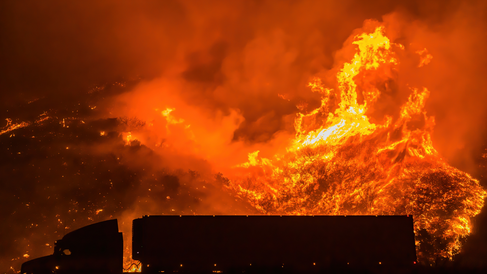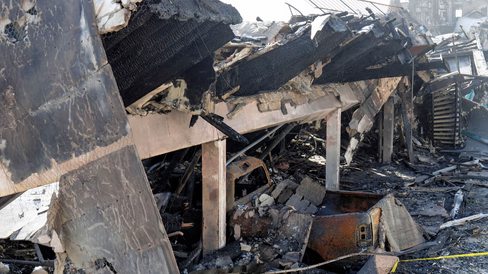Sprawl and Wildfires: A Dire Combination for Californians
- Brenda Garcia-Millan

- Aug 2, 2021
- 3 min read
Updated: Jan 10, 2022
If there is one topic that dominates California politics, it is the need to provide housing for the growing number of residents who can no longer afford to live in their communities.
California’s shortage of affordable housing is no accident, it is the result of poor land use decisions made by elected officials. Instead of building housing nearing existing jobs, schools, and transit, they have favored low-density construction further and further outside of our city cores.
The outward creep of low-density residential and commercial development—also known as sprawl development—is a defective policy that puts entire communities at risk of catastrophic wildfires while doing little to solve California's housing shortage.

The climate crisis is fueling extreme weather conditions, so West Coast fire seasons are starting earlier and lasting longer each year. In 2020, California experienced a record-breaking fire season:
8,000+ wildfires burned over 4 million acres of land—the most in a single year since CalFire began keeping records, and more than the last three years combined.
Wildfires killed 31 people and damaged over 10,000 buildings, putting numerous firefighters in precarious and life-threatening situations.
Nearly one-third of the County of San Diego is located in a very high fire risk area.
This year, the San Diego region is experiencing its sixth driest season on record, increasing the likelihood of severe wildfires. Indeed, much of the San Diego region is located in fire-risk zones with nearly one-third of the county located at a very high risk of fire, and another 270 square miles remaining at high risk (see map).

Figure 1. Wildfire Hazard Map Tool
Data shows that Latinos in Western states are disproportionately vulnerable to fires, since they are twice as likely to live in areas most threatened by wildfires relative to the overall U.S. population.
The combination of extreme weather and wildfires cause considerable harm to residents and their property, and Black, Indigenous, and People of Color (BIPOC) communities are experiencing the worst of it. Data shows that Latinos in Western states are disproportionately vulnerable to fires, since they are twice as likely to live in areas most threatened by wildfires relative to the overall U.S. population. Families should not have to choose between affordability and safety. Yet, in California, the lack of affordable housing and the growth of the Latino population is pushing families into remote areas with a higher risk of fires.
As more people are forced to move to fire risk areas, the State of California has focused on creating construction standards that require an increase in “fire resistant” homes. This is despite the fact that the single-most important risk factor isn’t the type of construction materials, but the location in which new developments are built. The 2018 Thomas Fire in Ventura, California demonstrated this, firsthand. 80% of destroyed homes had fire-resistant exteriors, and 90% had fire-resistant roofs, showing that it is almost impossible to fire-proof homes built in fire hazard severity zones.
Pictured: 2018 Thomas Fire, During and Damage After
The main reason sprawl development leads to fires is that it places residential homes close to wildland surrounded by shrubs and highly flammable materials. The nearby fuel makes it easy for fires to ignite, and quickly spread, often destroying homes and claiming lives within a few hours before firefighters have time to respond. In fact, most “human-caused” fire ignitions occur near sprawl developments, where naturally occurring flammable material is plentiful.
Even when property is saved, smoke from wildfires can cause everything from irritation of the eyes and respiratory tract to more serious illnesses like bronchitis, asthma aggravation, heart failure, and premature death. Smoke exposure is especially dangerous to children, pregnant women, and the elderly. In addition to human costs, wildfires can also cause significant environmental damage by destroying natural space and hurting animal species which have less places to find safe refuge from fires, due to human expansion.
The best way to protect ourselves from destructive fires is by preventing them from occurring in the first place. Sprawl development is fueling wildfires and leaving humans and animals vulnerable to fire risks. If we want to tackle our housing and environment crisis there is only one option: infill development near transit and jobs.
Want to learn more? Check out our report, Solving Sprawl: Building Housing For A Sustainable And Equitable San Diego for an in-depth exploration of the housing alternatives to dangerous and unsustainable sprawl development.












Comments